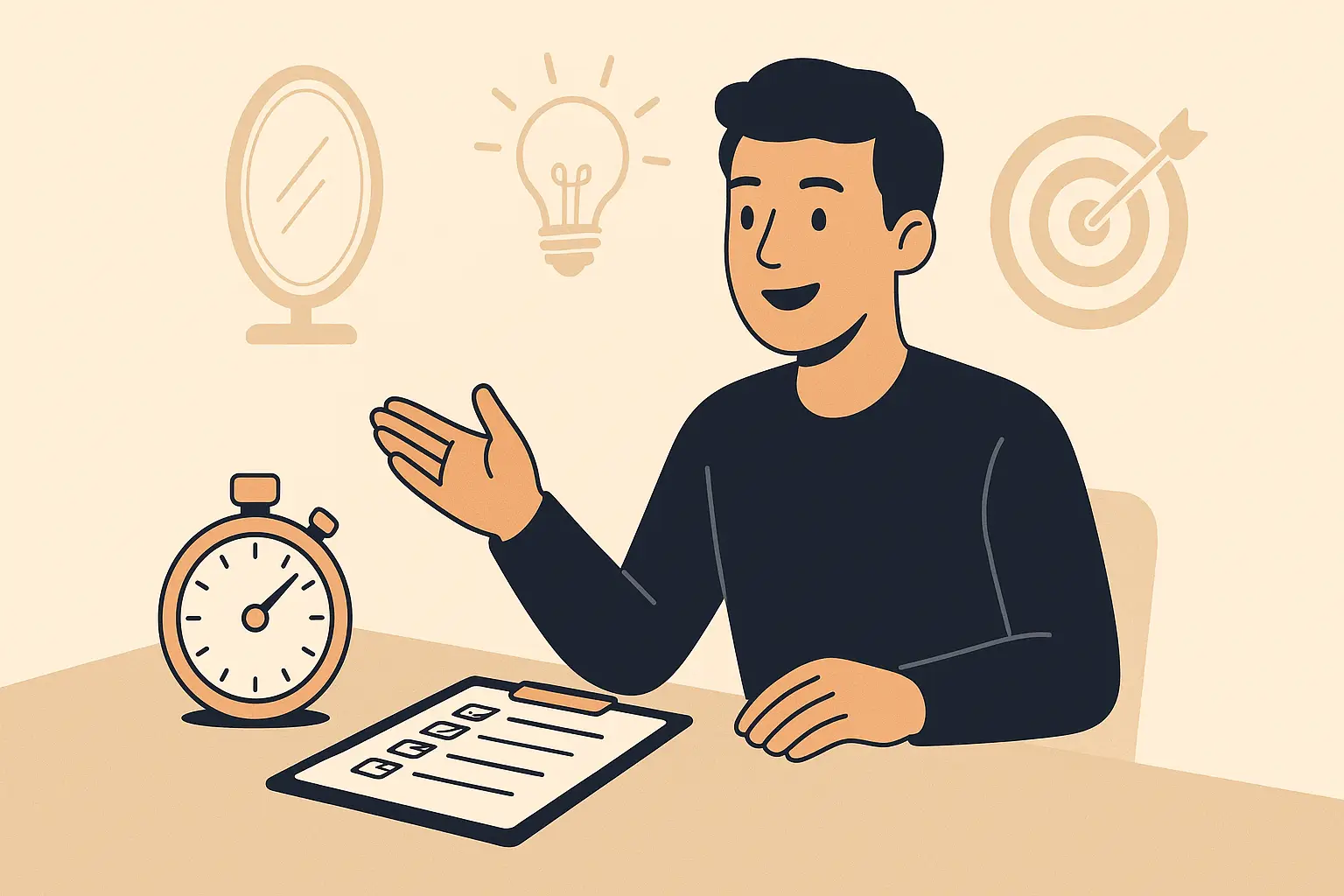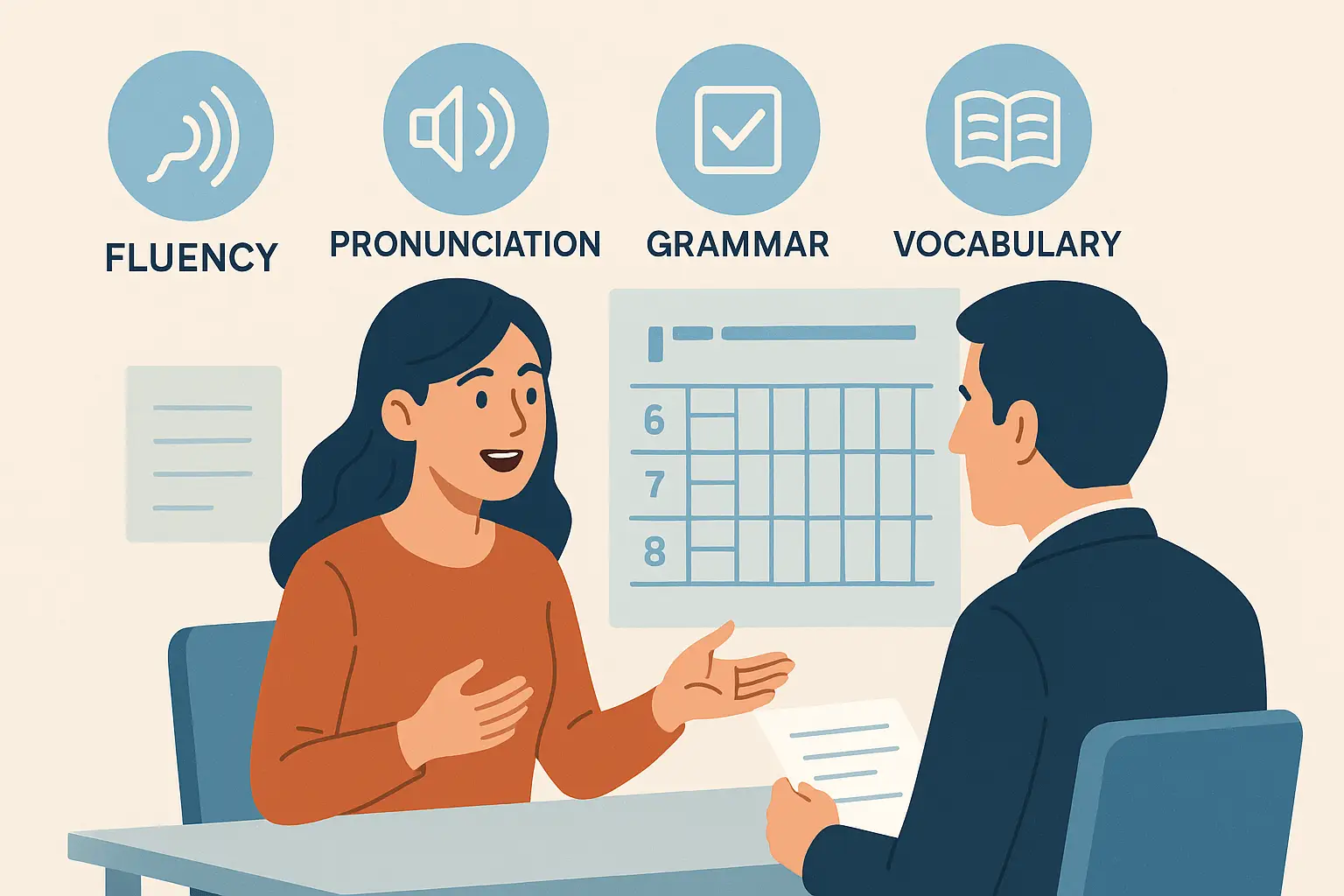If you’ve ever felt unsure about what exactly happens during the IELTS Speaking test, you’re not alone. As an international IELTS teacher working with students from over 20 countries, one of the most common questions I hear is: “What is the IELTS Speaking test format, and how much time does each part take?”
This blog post offers a complete breakdown of the IELTS Speaking Test Format and Timing, answering the exact questions my students often ask. Let’s demystify the process so you can walk into your exam room confident and prepared.
Why the IELTS Speaking Test Confuses Students
Many learners assume the Speaking test will be a casual conversation. But when they walk into the test room and hear a structured series of questions, a timer running, and formal language from the examiner — panic often sets in.
One of my students in Brazil once told me she thought it was a friendly interview, so she was caught off-guard when asked to speak non-stop for two minutes without interruption in Part 2. This is a real challenge if you don’t know the structure in advance.
IELTS Speaking Format: What to Expect
The IELTS Speaking test lasts 11 to 14 minutes and is divided into three clearly defined parts. Each part is timed, and the examiner follows a script approved by Cambridge Assessment English. Understanding this timing helps you prepare mentally and manage your speaking speed.
Let’s break it down.
Part 1 – Introduction and Interview (4–5 minutes)
This section feels the most relaxed. The examiner will start by confirming your identity, then ask questions about familiar topics — such as your hometown, hobbies, work, or studies.
🧠 Common Student Problem: Many students give short answers, thinking it’s like a yes/no interview. One of my learners in India simply said “Yes” when asked, “Do you like reading?” That’s not enough!
✅ Solution: Extend your answers using explanations, examples, and reasons. For instance, “Yes, I enjoy reading historical fiction because it helps me learn about past cultures while relaxing.”
Part 2 – Long Turn (3–4 minutes)
In this part, the examiner gives you a cue card with a topic and prompts. You’ll have 1 minute to prepare and then must speak for 1–2 minutes without interruption.
🎯 Real Challenge: I often see students freeze or run out of things to say after 45 seconds.
🗣️ What I Teach: Use the preparation minute to jot down ideas using WH-questions (who, what, where, when, why, how). This structure gives you a natural flow.
Learn more about speaking strategies for each part in our detailed guide:
👉 IELTS Speaking Parts: Format & Strategies
Part 3 – Two-Way Discussion (4–5 minutes)
Here, the examiner expands on the Part 2 topic and asks more abstract and opinion-based questions. This part tests your ability to justify ideas, compare, speculate, and evaluate.
💡 Example: After speaking about a book in Part 2, you might be asked, “Do you think reading habits are changing in your country?”
🧩 Tip: Practice developing your answers using this structure: state your opinion → give a reason → support with an example.
Manage Your Time and Mindset
Timing is not just about the clock — it’s about energy and mental pace. Many students try to rush through their answers or speak too slowly and run out of time. In my classroom, I help students train their speaking pace using mock tests with real IELTS timing.
If you’re serious about mastering the test, get familiar with the complete structure via official sites like:
🔗 ielts.org
🔗 British Council – Take IELTS
🔗 IELTS IDP
Also, explore our full resource for success in all parts of the test:
👉 Complete Guide to IELTS Speaking
Final Thoughts
Understanding the IELTS Speaking Test Format and Timing is your first step toward Band 7 or higher. With the right preparation, even nervous speakers can perform with confidence.
My advice? Don’t memorise answers — instead, master the format, build strategies, and simulate real test conditions. I’ve seen students improve their band score by one full band simply by learning how to handle timing and structure.
IELTS Speaking Test Format and Timing
Q1: How long is the IELTS Speaking test?
A: The total duration is 11 to 14 minutes, split across three parts.
Q2: Is the speaking test different for Academic and General Training?
A: No. The Speaking section is exactly the same for both versions.
Q3: Can I ask the examiner to repeat a question?
A: Yes, absolutely. It’s better to ask for repetition than to guess the question.
Q4: What happens if I speak for less than 1 minute in Part 2?
A: You won’t be stopped, but your score may be affected if your response is too short or lacks development.
Q5: Can I take notes during Part 2?
A: Yes, you’re given a pencil and paper to jot down ideas during the 1-minute preparation time.
Let me know in the comments which part of the test feels the hardest to you — I’ve probably helped someone just like you through it. Keep learning, and remember: timing and preparation turn nervous speakers into confident communicators.





2 Responses